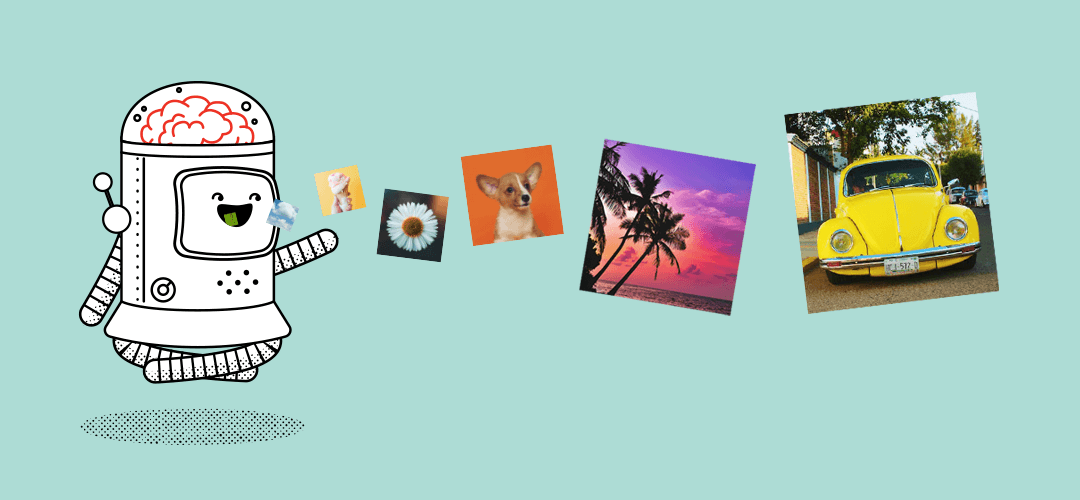
In today’s fast-paced digital world, marketing strategies are constantly evolving and creating new opportunities for brands. From Artificial Intelligence-powered shopping assistants to AI-generated images and copy, the rise of artificial intelligence (AI) has given marketers a powerful tool to enhance their efforts and drive results. One of the most exciting developments in AI for marketing is generative AI. In this blog, we’ll explore how generative AI is revolutionizing marketing strategies and how it can benefit your business.
What is Generative AI?
Generative AI is a subset of artificial intelligence that uses algorithms to generate new content, designs or ideas. Unlike traditional AI, which is programmed to perform specific tasks, generative AI has the ability to create new and unique content on its own.
Tools like ChatGPT, DALL-E and Bard are examples of generative AI applications that use machine learning to produce text or images based on user-given prompts or dialogue.
Even in their nascent stage, these innovations are exciting and give us a glimpse into what the future can be. However, they are still being developed and have multiple kinks to work out. For example, image generators struggle with creating realistic hands in pictures, while text generators can craft eloquent prose, but their fact checking leaves a lot to be desired. The output of any generative AI tool should always be reviewed by subject matter experts before it’s ready for prime time.
How Does Generative AI Work?
Generative AI works by analyzing large amounts of data and using that information to create new content. This data can include images, text, audio or any other type of digital content. The AI then uses this information to generate new content that is similar to the original but with its own unique elements.
That’s how the Beatles released a new song on November 2, 2023. Yes, those Beatles. Their new song “Now and Then,” comes from a batch of unreleased demos written by John Lennon in the 1970s, which were given to his former bandmates by Yoko Ono. They used the tape in the mid-1990s to construct the songs “Free As a Bird” and “Real Love,” but there were technical limitations to finishing “Now and Then.”
Paul McCartney and Ringo Starr teamed up with producers to use technical restoration methods that separated the Beatles’ voices from background sounds. With the ability to isolate Lennon’s voice from the original cassette tape, they could complete “Now and Then” using machine learning.
In marketing, a generative AI tool could analyze a company’s past advertising campaigns and use that data to create a new campaign with similar elements and an updated twist. This allows for a more personalized and creative approach to marketing that can scale more easily.
Generative AI for Marketing
Generative AI has the potential to revolutionize marketing strategies in a variety of ways. Let’s take a look at some of the key benefits of using generative AI for marketing.

Personalization and Customization
One of the biggest advantages of generative AI for marketing is its ability to personalize and customize content. By analyzing data on customer preferences and behaviors, generative AI can create content that is tailored to individuals. This can include personalized emails, social media posts and even website content.
This level of personalization can greatly improve the customer experience and increase engagement with your brand. For example, if a restaurant is sending an email blast, generative AI could tailor the featured menu item to be eggplant parmesan for consumers who have only purchased vegetarian entrees to date. Recipients would find the information in the email more relevant to their shopping habits, improving their likelihood of engaging with the brand. Customers are more likely to respond positively to content that is tailored to their interests and needs, leading to higher conversion rates and customer satisfaction.
Time and Cost Savings
With generative AI, marketers can save time and resources by automating the content creation process. Instead of spending hours creating individual pieces of content, generative AI can produce multiple variations in a fraction of the time. From editing an image to removing an unwanted element in a picture to creating post copy for social media, generative AI can handle the tasks for you. This allows marketers to focus on other important projects and frees up time for more creative endeavors.
Additionally, generative AI can save money by reducing the need for human labor in content creation. This can be especially beneficial for small businesses or startups with limited resources. As mentioned previously, there should be a review process in place before distributing any AI-generated content to ensure it is representing your brand consistently and appropriately.
Improved Creativity and Innovation
Generative AI can also enhance creativity and innovation in marketing strategies. Asking a prompt of a generative AI tool can be helpful in your brainstorming process, such as, “What should the tagline be for my new hair salon that specializes in hair color for kids?” The list that is generated can offer a wide range of options to choose from or inspire directions for further exploration.
You can also use Generative AI to help build your marketing plan. Ask an AI tool about websites that target your specific audience, for advice on how often to post on social media or for email content ideas.
By generating new and unique content, marketers can break out of traditional patterns and experiment with fresh ideas. This can lead to more innovative and effective marketing campaigns that stand out from the competition.
Enhanced Customer Insights
Generative AI can also provide valuable insights into customer preferences and behaviors. By analyzing data from past campaigns and customer interactions, generative AI identifies patterns and trends that can inform future marketing strategies. This can help marketers better understand their target audience and create more effective campaigns.
A clothing retailer may discover that its online sales increase during lunch time on Fridays, aka, pay day. To take advantage of this behavior, the business could create a targeted campaign for their audience, promoting a sale during the lunch window on Fridays.
Generative AI for Email Marketing
Email marketing is a crucial component of any marketing strategy, and generative AI can greatly enhance its effectiveness. Let’s take a look at some of the ways generative AI can be used for email marketing.
Personalized Email Content
Generative AI can be used to personalize email content for each individual recipient, from including their name at the top to customizing the products featured. By analyzing data on customer preferences and behaviors, generative AI can create unique email content that is tailored to each customer. This can greatly improve open and click-through rates, leading to higher conversions and customer engagement.
Automated Email Campaigns
Generative AI can also automate the email campaign process by generating multiple variations of the email content. This saves time and resources for marketers and ensures that customers receive timely and relevant content.
It can also help to establish an email cadence that aligns with customers’ progression down the sales funnel, starting with content that promotes awareness, and then flowing through discovery, evaluation, intent, purchase and ultimately brand loyalty.
Additionally, generative AI can analyze customer responses to previous email campaigns. So, if an email with a buy-one-get-one-free coupon performed well during the spring, a marketer could repeat the offer during that season to create more effective campaigns moving forward.
A/B Testing
A/B testing is a common practice in email marketing, where two versions of an email are sent to a small group of recipients to determine which performs better. Common aspects to test include the subject line, offer and imagery.
Generative AI can automate this process by producing multiple variations of an email and sending them to different groups of recipients. This can save time and resources for marketers and provide valuable insights into which types of content perform best with different segments of their audience. With insights on the version that performed best, you can then send the more effective email to a wider list of recipients.
Real-World Examples of Generative AI in Marketing
Generative AI is already being used by some of the world’s leading companies to enhance their marketing strategies. Let’s take a look at a few real-world examples.
Netflix
Netflix uses generative AI to personalize the artwork for each show or movie based on a viewer’s preferences. This allows them to create more targeted and engaging content for each individual viewer, leading to higher engagement and retention rates.
The North Face®
The North Face used generative AI to create personalized emails for their customers. By analyzing data on customer preferences and behaviors, the technology generated unique email content for each individual recipient. This resulted in a 60 percent increase in click-through rates and a 75 percent increase in conversions.
Sephora
The global beauty brand tapped into AI to create an augmented reality makeup app. Sephora Visual Artist scans a user’s face and then lets them try out products, including foundation, lipstick and eyeshadow without ever setting foot in a store. Virtually testing makeup helps customers compare brands and decide what to buy. The app also scans a customer’s skin color to make foundation recommendations and can provide customized, step-by-step tutorials for applying makeup.
Implementing Generative AI in Your Marketing Strategy
If you’re interested in incorporating generative AI into your marketing strategy, here are some steps to get started.
Identify Your Goals
Before implementing generative AI, it’s important to identify your goals and how you want to use the technology in your marketing strategy. This will help you determine which tools and techniques will be most beneficial to your business. Your goals could be to increase sales, grow followers on social media or get more homepage visits.
Choose the Right Tools
There are a variety of generative AI tools available for marketers, so it’s important to choose the right one for your needs. Some popular options include MidJourney, DAll-E, Stable Diffusion, RunwayML and Adobe’s Firefly.

Train Your AI
Once you’ve chosen a tool, you’ll need to train your AI by providing it with data to analyze. This can include images, text or any other type of digital content. The more data you provide, the more accurate and effective your AI will be.
Monitor and Adjust
As with any new marketing strategy, it’s important to monitor the results and make adjustments as needed. This will help you determine what’s working and what can be improved upon to make your next campaign even more successful.
Generative AI is revolutionizing marketing strategies by providing personalized and innovative content that engages customers and drives results. By incorporating generative AI into your marketing strategy, you can save time and resources, enhance creativity and innovation and gain valuable insights into your target audience. With the right tools and techniques, generative AI can take your marketing efforts to the next level and help your business stand out in a crowded digital landscape.
Want some help getting started with generative AI? Fill out our contact form to chat about what we can accomplish together.